Showing Spotlights 185 - 192 of 625 in category All (newest first):
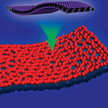 In new work, a research team has developed a general synthesis strategy by employing graphene oxide as a sacrificial template to prepare various 2D holey transition metal oxide (TMO) nanosheets, including mixed metal oxides and simple metal oxides. This approach is universal for the synthesis of various 2D holey TMO nanosheets including mixed transition-metal oxides and simple oxides. This unique holey structure can minimize the restacking of 2D nanosheets and provide more active sites for alkali-ion storage.
In new work, a research team has developed a general synthesis strategy by employing graphene oxide as a sacrificial template to prepare various 2D holey transition metal oxide (TMO) nanosheets, including mixed metal oxides and simple metal oxides. This approach is universal for the synthesis of various 2D holey TMO nanosheets including mixed transition-metal oxides and simple oxides. This unique holey structure can minimize the restacking of 2D nanosheets and provide more active sites for alkali-ion storage.
May 31st, 2017
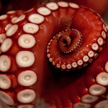 Inspired by octopus arms, researchers demonstrate an uncomplicated and scalable templating technology for fabricating nanosuckers on PDMS substrates, using a scalable spin-coating technology. As the nanosuckers are pressed against a substrate, the flexible nanosuckers confirm to the substrate and deform by releasing the internal air between nanosuckers and the substrate, forming a seal and generating an adhesion force. The nanosucker adhesion is maintained over multiple contact cycles on both wet and dry surfaces.
Inspired by octopus arms, researchers demonstrate an uncomplicated and scalable templating technology for fabricating nanosuckers on PDMS substrates, using a scalable spin-coating technology. As the nanosuckers are pressed against a substrate, the flexible nanosuckers confirm to the substrate and deform by releasing the internal air between nanosuckers and the substrate, forming a seal and generating an adhesion force. The nanosucker adhesion is maintained over multiple contact cycles on both wet and dry surfaces.
May 25th, 2017
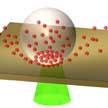 The use of quantum dots (QDs) in practical applications relies on the ability to precisely pattern QDs on substrates with desired optical properties. Typical direct-write printing techniques such as inkjet and gravure printing are limited in resolution (micron-scale), structural complexity, and require significant post-processing time. In new work, researchers use laser-induced bubble printing to pattern CdSe/CdS QDs on plasmonic substrates with submicron resolution, high throughput, and strong QD-substrate adhesion.
The use of quantum dots (QDs) in practical applications relies on the ability to precisely pattern QDs on substrates with desired optical properties. Typical direct-write printing techniques such as inkjet and gravure printing are limited in resolution (micron-scale), structural complexity, and require significant post-processing time. In new work, researchers use laser-induced bubble printing to pattern CdSe/CdS QDs on plasmonic substrates with submicron resolution, high throughput, and strong QD-substrate adhesion.
May 11th, 2017
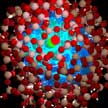 Hybrid nanomaterials (nanohybrids) are composed of two or more components - at least one of which is nanoscale - exhibiting many distinct physicochemical properties and hold great promise for applications in optics, electronics, magnetics, new energy, environment protection, and biomedical engineering. Different types of nanohybrids have been successfully synthesized via microfluidic processes or hybrid microfluidic-batch processes. The synthesis of nanohybrids using microfluidic-based processes can fulfill many challenges present in conventional bottle batch methods.
Hybrid nanomaterials (nanohybrids) are composed of two or more components - at least one of which is nanoscale - exhibiting many distinct physicochemical properties and hold great promise for applications in optics, electronics, magnetics, new energy, environment protection, and biomedical engineering. Different types of nanohybrids have been successfully synthesized via microfluidic processes or hybrid microfluidic-batch processes. The synthesis of nanohybrids using microfluidic-based processes can fulfill many challenges present in conventional bottle batch methods.
May 9th, 2017
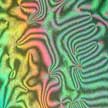 An recent analysis of the combined effect of nanoparticles and substrates on the concentration of mobile ions in liquid crystals considers both 100% pure and contaminated with ions substrates and nanoparticles. The results could be very useful for engineers trying to apply nanotechnology to liquid crystal devices. Specifically, the control of mobile ions in liquid crystals by means of nanoparticles and substrates of the cell tailored for specific applications - liquid crystal displays, light shutters, switches, modulators, etc.
An recent analysis of the combined effect of nanoparticles and substrates on the concentration of mobile ions in liquid crystals considers both 100% pure and contaminated with ions substrates and nanoparticles. The results could be very useful for engineers trying to apply nanotechnology to liquid crystal devices. Specifically, the control of mobile ions in liquid crystals by means of nanoparticles and substrates of the cell tailored for specific applications - liquid crystal displays, light shutters, switches, modulators, etc.
Mar 8th, 2017
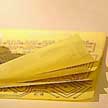 Paper electronics - putting flexible electronic sensors and other circuits on regular paper - have the potential to cut the price of a wide range of medical tools, from point-of-care diagnostic tests to portable DNA detectors. In new work, researchers have now shown an integration strategy to rationally design an ultra-low cost health monitoring device, a Paper Watch, using recyclable household materials: non-functionalized papers.
Paper electronics - putting flexible electronic sensors and other circuits on regular paper - have the potential to cut the price of a wide range of medical tools, from point-of-care diagnostic tests to portable DNA detectors. In new work, researchers have now shown an integration strategy to rationally design an ultra-low cost health monitoring device, a Paper Watch, using recyclable household materials: non-functionalized papers.
Feb 16th, 2017
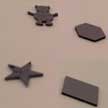 Researchers have developed a highly manufacturable deep reactive ion etching based process involving a hybrid soft/hard mask process technology that shows high aspect ratio complex geometry Lego-like silicon electronics formation enabling free-form (physically flexible, stretchable, and reconfigurable) electronic systems. This hybrid mask enables deep sub-millimeter etching while preserving existing devices and structures and is advantageous for many applications, including lego like concept for pre-packaging modules/system integration.
Researchers have developed a highly manufacturable deep reactive ion etching based process involving a hybrid soft/hard mask process technology that shows high aspect ratio complex geometry Lego-like silicon electronics formation enabling free-form (physically flexible, stretchable, and reconfigurable) electronic systems. This hybrid mask enables deep sub-millimeter etching while preserving existing devices and structures and is advantageous for many applications, including lego like concept for pre-packaging modules/system integration.
Feb 6th, 2017
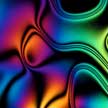 Liquid crystals used in modern devices such as laptops, tablets and smartphones typically contain a small fraction of ionic contaminants. These ion contaminants can originate from multiple sources during the chemical synthesis of materials, in the process of assembling the device, and in its daily use.
In the case of LCDs, mobile ions in liquid crystals lead to such undesirable effects as image sticking, image flickering, and slow response. A promising solution to reduce the concentration of mobile ions in liquid crystal devices can be found by merging liquid crystals and nanotechnology.
Liquid crystals used in modern devices such as laptops, tablets and smartphones typically contain a small fraction of ionic contaminants. These ion contaminants can originate from multiple sources during the chemical synthesis of materials, in the process of assembling the device, and in its daily use.
In the case of LCDs, mobile ions in liquid crystals lead to such undesirable effects as image sticking, image flickering, and slow response. A promising solution to reduce the concentration of mobile ions in liquid crystal devices can be found by merging liquid crystals and nanotechnology.
Jan 23rd, 2017
 In new work, a research team has developed a general synthesis strategy by employing graphene oxide as a sacrificial template to prepare various 2D holey transition metal oxide (TMO) nanosheets, including mixed metal oxides and simple metal oxides. This approach is universal for the synthesis of various 2D holey TMO nanosheets including mixed transition-metal oxides and simple oxides. This unique holey structure can minimize the restacking of 2D nanosheets and provide more active sites for alkali-ion storage.
In new work, a research team has developed a general synthesis strategy by employing graphene oxide as a sacrificial template to prepare various 2D holey transition metal oxide (TMO) nanosheets, including mixed metal oxides and simple metal oxides. This approach is universal for the synthesis of various 2D holey TMO nanosheets including mixed transition-metal oxides and simple oxides. This unique holey structure can minimize the restacking of 2D nanosheets and provide more active sites for alkali-ion storage.
 Subscribe to our Nanotechnology Spotlight feed
Subscribe to our Nanotechnology Spotlight feed





